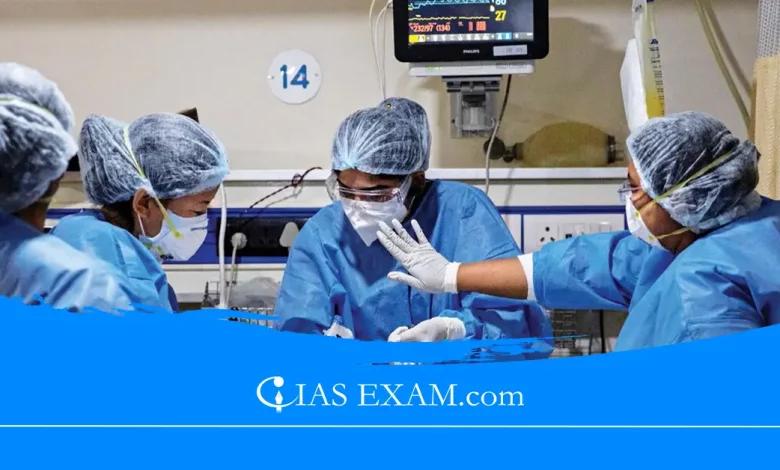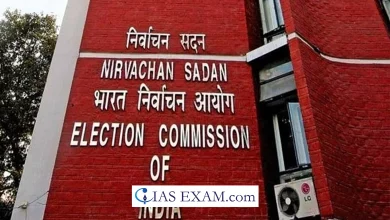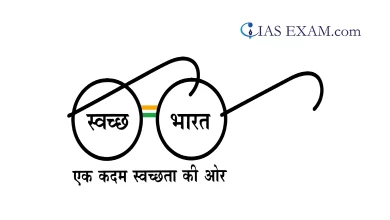
Context
In India, the Public Health Centers have long been shrouded in infamy as well as being viewed as the emblems of the Government’s structural breakdown. The effectiveness of primary healthcare in India has always been a topic of discussion, with calls for strengthening these services through government commitment to accessibility, affordability and quality care.
Primary Health Centers in India
- Primary Health Centers or PHCs play a crucial role in providing comprehensive healthcare services to the population.
- The first PHC in India was established following the proposal of the PHC concept in a paper submitted to the Executive Board of the World Health Organization (WHO) in January 1975. It further gathered momentum with the International Conference on PHC held in Alma Ata, Kazakhstan.
- PHCs are the fundamental component of a healthcare system, with a Medical Officer at these centers required to hold an MBBS degree.
Assessment of Health Centers and their Importance
- Health Centers and PHCs serve as the backbone of the country’s healthcare system as they provide primary care to the million general population.
- In India, there exists a big public health infrastructure with around 23000 PHCs and over 1.45 lakh sub-centers, serving a substantial part of the country’s population. These centers aim to offer accessible and affordable healthcare especially in the rural areas.
- PHCs cover a significant portion of outpatient care, including services for
non-communicable diseases, maternal health, and child health. - Effective health centres help in mitigating social and health inequities, reducing reliance on costly private healthcare and preventing households from falling into poverty due to healthcare expenses.
- Recent surveys conducted across various states of India have revealed a pattern of improving quality and utilization of health services over time although at a slow pace.
- Incremental improvements have been witnessed owing to increased expenditure on health and initiatives like the National Rural Health Mission, Ayushman Mission etc.
Issues and Challenges
- Lack of Infrastructure – As a matter of fact, numerous healthcare centers in India face infrastructural challenges including lack of proper facilities, essential medical equipment and substandard center maintenance. It affects the delivery of quality healthcare services.
- Resource Constraints – There is a genuine shortage of skilled healthcare workers in the country including doctors, nurses and other paramedical staff. It presents a significant impediment to the functioning of health centers. Uncertain recruitment processes and uneven distribution of healthcare personnel and retention issues increases the strain on existing resources and affects service delivery.
- Geographic Disparities – Disparities in access to healthcare services persist across different regions of India, with rural and remote areas often facing greater challenges in healthcare provision compared to urban centers. Limited access to transportation, geographical barriers, and inadequate healthcare infrastructure exacerbate disparities in healthcare access and outcomes.
- Quality of Care – Ensuring the provision of quality healthcare services remains a critical concern in India’s health centers. Challenges related to clinical governance, adherence to medical protocols, and patient safety standards contribute to perceptions of inadequate care delivery and undermine public trust in the healthcare system.
Addressing Challenges and Exploring Solutions
- Strengthening Infrastructure – Investing in the improvement and expansion of healthcare infrastructure, including the construction of new facilities, renovation of existing infrastructure, and procurement of essential medical equipment, is essential to enhancing the capacity and functionality of health centers.
- Human Resource Development – Prioritizing the recruitment, training, and retention of skilled healthcare professionals is crucial for addressing human resource constraints in health centers.
- Enhanced Funding and Resource Allocation – Increasing budgetary allocations and mobilizing resources for healthcare, particularly in underserved regions, is imperative for strengthening health systems and addressing existing gaps in service delivery.
- Promoting Equitable Access – Implementing targeted interventions to improve access to healthcare services in underserved areas, such as rural and remote regions, is essential for reducing geographic disparities in healthcare provision.
- Emphasizing Quality Improvement – Fostering a culture of quality improvement and patient-centered care is essential for enhancing the quality of healthcare services delivered by health centers.
Conclusion
The assessment of India’s health centers reveals multifaceted challenges and opportunities for improvement. While concerns regarding the ‘collapse’ of healthcare centers warrant attention, it is essential to adopt a nuanced and holistic approach to address underlying structural deficiencies and promote equitable access to quality healthcare services for all. By prioritizing investments in infrastructure, human resources, funding, and quality improvement initiatives, India can strengthen its healthcare system and better respond to the evolving health needs of its population.
SOURCE: The Hindu





.png)



